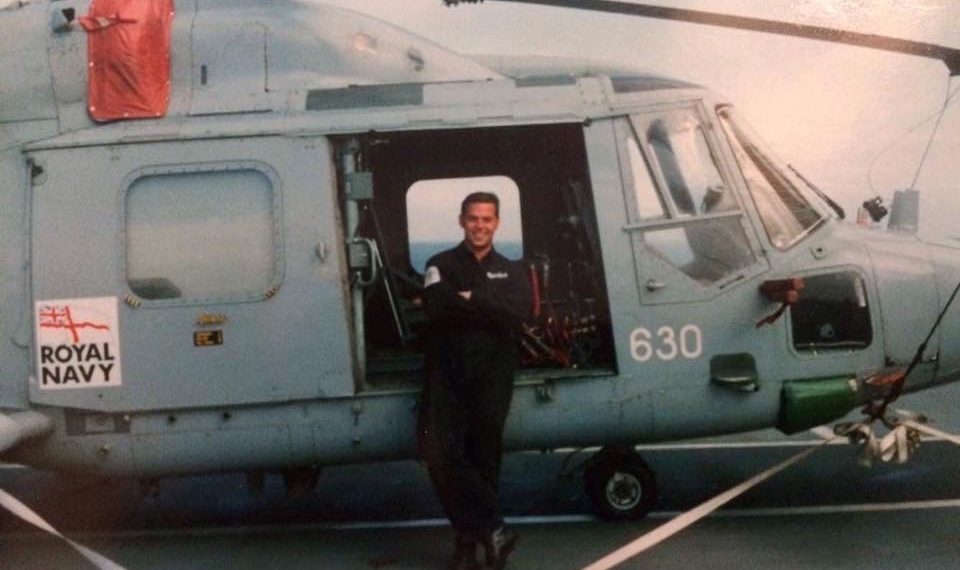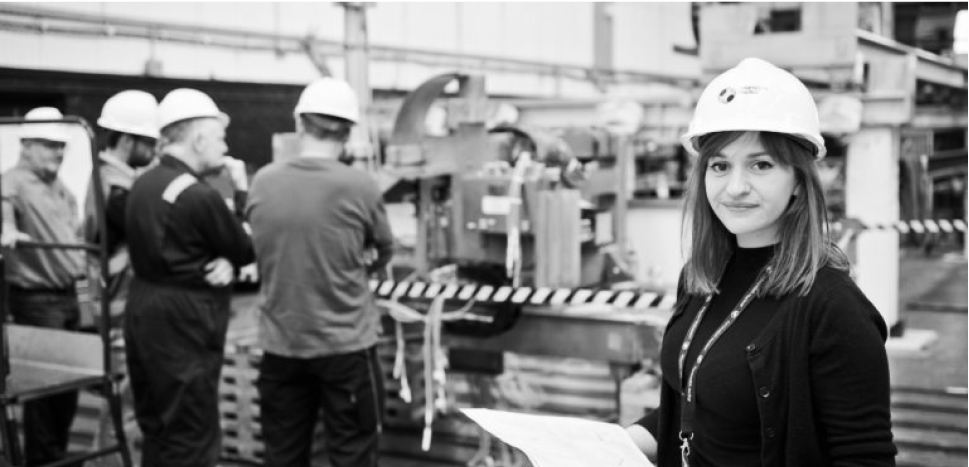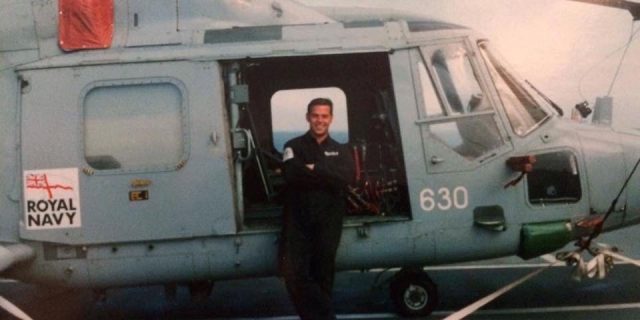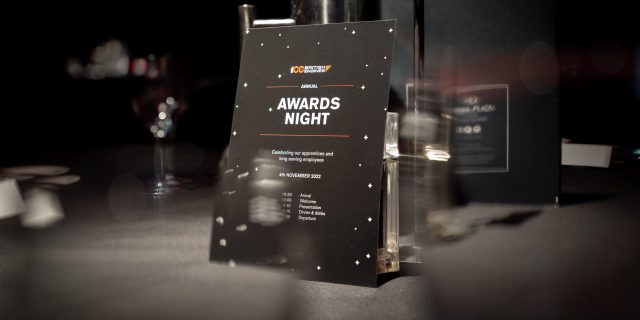In honour of Armed Forces Day, we caught up with ex-veteran Craig Gibson, Process/CI Engineer at BEL Engineering, about his time in the Royal Navy.
Craig served for 10 years working on both Lynx Mark 3 and 8 naval aircrafts, whilst travelling the world.
We interviewed Craig to hear about his life in the Royal Navy, the Navy’s ‘Jack speech’ language and how you can end up in naval prison for being late.
When did you join the Royal Navy?
I joined in October 1995 at the age of 19. I travelled by train from Newcastle to Plymouth with three lads, two who I knew from the Sea Cadets and another who later became one of my best friends. When we arrived, we travelled to HMS Raleigh for the start of a two-month basic training, which was a bit of an eye opener!
Why did you join the Royal Navy?
I joined the Sea Cadets in 1988 after they visited my school. My grandad was in the Royal Navy during World War 2, and it was a boyhood dream to follow in his footsteps and see the world. One word of advice he gave me about the Navy was to ‘make sure you have a job that puts you on the upper deck’.
My mam passed away in 1990 when I was 14 which pushed me to follow my dreams. I originally applied to join the Navy in 1993 when I was 17 for the Artificer Apprentice position but I failed the aptitude test by 2%. I was gutted but because I had an above average score to join the Fleet Arm, I was offered Marine Engineer and Mechanic positions. All I wanted to do was work on an aircraft, and with my Grandad’s advice still fresh in my mind, I decided to wait until the opportunity came along.
Two years later the Air Engineering branch opened for recruitment, and I retook my medical exam. I passed but I was told I was overweight and had three months to lose three stone. I cut my diet down to 1,500 calories per day, stopped drinking alcohol, cycled 40 miles to and from work, swam and ran a mile a day. The weight dropped off!
How did you find the training?
The first two months of transitioning from being a civilian to a sailor were tough. We had to do five-mile squad runs, fitness tests, 1.5 mile runs in 11 minutes or less, 22 kilometer hikes around Dartmoor in six hours, obstacle courses, and go to the gym at least three times per week. At HMS Raleigh as a trainee you weren’t allowed to walk, unless you were in a squad marching around the establishment. This mean we had to ‘double’, which is essentially running. I lost even more weight after that, to the point where my own family didn’t recognise me.
You were in the Royal Navy for 10 years, what roles did you do during that time?
When you join HMS Raleigh and the Royal Navy, your primary role is to be a sailor, to defend and safeguard the United Kingdom on sea and land. My secondary role was to maintain naval aircrafts, which involved tool control, aircraft firefighting, logistics, mechanical, electrical, radio systems, component assembly and the management of documentation. I also completed courses to be able to load/unload weapons to aircrafts, flight deck firefighting and damage control to prevent the ship sinking. I rotated working on land and at sea over the 10 years.
In 1996, at the age of 20, I qualified to maintain sign documentation for Lynx Mark 3 and 8 aircrafts which was my first major achievement since my passing my basic training. The course would normally take 2-3 years at college, I did it in 11 months!
I was then promoted to Plane Captain which involved looking after and servicing the aircraft before and after flight. Checking the airworthiness of an aircraft carried a lot of responsibility. If the aircraft was unserviceable, then you worked on it until it was, whether that was an engine change, main rotor blade or changing a light bulb. Every change had to be logged and signed for.
What were your other career highlights?
In 2003 at the age of 26, I completed a Leading Rates Qualifying course, where I studied electrical systems for Seaking, Lynx and Merlin EH101 helicopters and Harrier Fast jets. This included AC/DC electrical supplies, instrumentation, engine, fuel, transmission, and weapon systems. During the 11 months I completed over 55 theory and practical exams. The final assessment was an intense two-hour oral exam, which I passed!
I was appointed Limited Supervisor on a Lynx aircraft after passing the exam. When I returned to the Lynx Naval Air squadrons, I was given a year to complete a Certificate of Competency on Lynx Mk 3 and Mk 8 electrical systems in more detail. This involved naval air station organisation, squadron operations and organisation, aircraft documentation and how to operate an aircraft.
After nine months of solid revising, I sat a six-hour oral exam which was led by the Deputy Air Engineer Officer, Senior Maintenance Rating Officer, and Electrical Trade Chief Supervisor of the squadron. It was the most intense exam of my life. I was asked questions like, ‘who is in charge of the Fleet Air Arm and who do they report to within the Royal Navy and Government?’, and ‘you’re at sea and you’ve got to move the aircraft from the hanger and out to the flying spot ready for flying, what would you do?’. All answers had to be in accordance with the Air Publications which was extremely difficult to remember.
I passed the exam and was appointed Full Supervisor on all naval aircraft, which meant I could join any squadron, even if I hadn’t worked on the aircraft before.
What skills did you learn?
Time keeping is the most impactful skill I learnt. In the Navy, if your ship is under sailing orders at 8am, you must be on board 5 minutes before. If you are late, you will miss sailing which could land you in Naval prison for a minimum of 28 days as it is classed as Absent Without Leave (AWOL). This is massively ingrained in me now.
Attention to detail is another skill I learnt. In the Fleet Air Arm there is an unwritten saying, ‘there are no laybys in the sky’ meaning you cannot cut corners. I also developed strong communication skills which gave me the confidence to speak to people. Communicating with different ranks in the Navy helped me with this.
Teamwork was another vital skill I had to learn, especially when 270 men and women on board are relying on you to carry out your role and support in any situation that may occur.
Do you have any fun facts about the Royal Navy?
The Navy has their own language called ‘Jack Speak’. Words like ‘goffa’ means drink, ‘nutty’ means sweets and ‘sea dust’ means salt.
Transitioning to the office was tough at first. As you can imagine I’d slip in jack speak without realising!
What locations did you serve in?
In the UK I served in Plymouth, Portsmouth, Dorset and Somerset. Whilst serving at sea, I sailed around the Falkland Islands, South Georgia, Chile and Brazil, to name a few!
I’ll never forget ringing my brother whilst having a few beers on Copacabana Beach during the Rio Carnival. I told him what I was doing and my travels so far. It was that phone call that inspired my brother to join the Royal Air Force. He went on to serve 17 years in the RAF.
How was it transitioning from the Royal Navy to your first job at BAE Systems?
When I interviewed for the Electrical Fitter at BAE Systems after I left the forces, I was asked questions that I had never experienced before. Some of the documents they showed me were completely new to me as I was used to electrical schematics and wiring diagrams, but I was able to work my way around them. Luckily, I got the job and after a couple of months I progressed into a Manufacturing Engineer’s position. This involved managing and writing Standing Operating Procedures (SOPs), which I had a lot of experience in from the Navy. Since then, I’ve worked in similar positions.
Did you take part in other activities in the Royal Navy?
When sailing to foreign places, the ship asked the crew if they would like to volunteer in the location they are in. I used to do it all the time as it’s a great way to give back to the community.
When in Brazil, I volunteered at an orphanage managed by nuns. The children wanted a football pitch, but the space they had was overgrown with trees and rubble. Between 15 of us, we were able to tidy the area and level the ground in one day. Playing football with the children at the end of the day and seeing them so happy was incredibly rewarding!
Are you in touch with anyone?
I’ve kept in contact with friends that I met during basic training and who I served with in the naval air stations.
Back in 2019, I went to Portland in Dorset for a squadron reunion, most of the people there I hadn’t seen since I left the Navy back in 2005. It felt only weeks had passed, not years. It’s funny because you pick up conversations where they left off.
I’m also a member of the Fleet Air Arm Association and the Royal British Legion, where I help with the Poppy Appeal every November. I am also an active member of the Royal Naval Association for veterans. We meet up once a month and it’s great to speak, be friends with and make friends with likeminded women and men.
BEL Engineering is proud to sponsor the Armed Forces Covenant, a pledge that supports those who serve or have served in the armed forces.
The covenant helps members of the armed forces community access a number of areas including; education and family wellbeing, home ownership, starting a new career, healthcare, financial assistance and discounted services.



